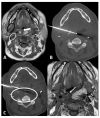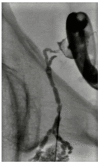Emerging Indications for Interventional Oncology: Expert Discussion on New Locoregional Treatments
- PMID: 36612304
- PMCID: PMC9818393
- DOI: 10.3390/cancers15010308
Emerging Indications for Interventional Oncology: Expert Discussion on New Locoregional Treatments
Abstract
Interventional oncology (IO) employs image-guided techniques to perform minimally invasive procedures, providing lower-risk alternatives to many traditional medical and surgical therapies for cancer patients. Since its advent, due to rapidly evolving research development, its role has expanded to encompass the diagnosis and treatment of diseases across multiple body systems. In detail, interventional oncology is expanding its role across a wide spectrum of disease sites, offering a potential cure, control, or palliative care for many types of cancer patients. Due to its widespread use, a comprehensive review of the new indications for locoregional procedures is mandatory. This article summarizes the expert discussion and report from the "MIOLive Meet SIO" (Society of Interventional Oncology) session during the last MIOLive 2022 (Mediterranean Interventional Oncology Live) congress held in Rome, Italy, integrating evidence-reported literature and experience-based perceptions. The aim of this paper is to provide an updated review of the new techniques and devices available for innovative indications not only to residents and fellows but also to colleagues approaching locoregional treatments.
Keywords: ablation; bone metastases; breast cancer; cementoplasty; cholangiocellular carcinoma; head and neck cancer; interventional oncology; lymphatics; radioembolization; spinal tumors.
Conflict of interest statement
The authors declare no conflict of interest.
Figures










References
-
- Sagoo N.S., Haider A.S., Chen A.L., Vannabouathong C., Larsen K., Sharma R., Palmisciano P., Alamer O.B., Igbinigie M., Wells D.B., et al. Radiofrequency ablation for spinal osteoid osteoma: A systematic review of safety and treatment outcomes. Surg. Oncol. 2022;41:101747. doi: 10.1016/j.suronc.2022.101747. - DOI - PubMed
Publication types
Grants and funding
LinkOut - more resources
Full Text Sources

